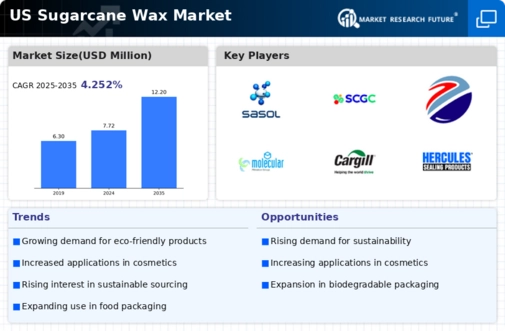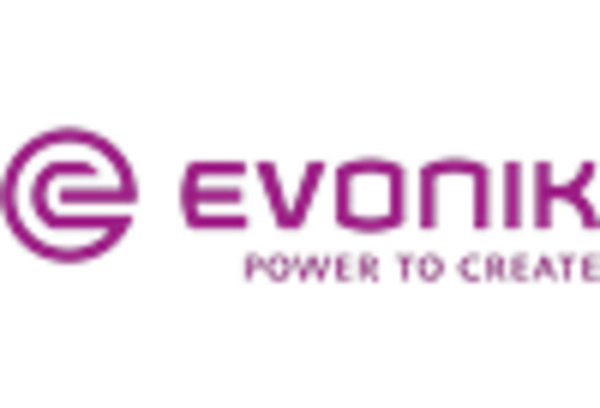Innovations in Packaging Solutions
The packaging industry is undergoing a transformation, with a growing emphasis on sustainable materials. Sugarcane wax is emerging as a viable alternative to traditional packaging materials, particularly in the production of biodegradable and compostable packaging solutions. The US packaging market is projected to reach $500 billion by 2025, with a significant portion of this growth driven by the demand for sustainable packaging options. As companies strive to reduce their environmental impact, the sugarcane wax market is likely to benefit from innovations in packaging technologies that incorporate this renewable resource. This shift not only addresses consumer concerns about plastic waste but also positions sugarcane wax as a key player in the evolving landscape of sustainable packaging.
Growth in Food Industry Applications
The food industry is increasingly recognizing the benefits of sugarcane wax, which serves as a natural coating and preservative for various food products. This trend is driven by the rising consumer demand for clean-label products and the avoidance of synthetic additives. In 2025, the US food coatings market is projected to reach $1.5 billion, with sugarcane wax playing a pivotal role in this growth. Its ability to enhance the shelf life of fruits and vegetables while maintaining their freshness is particularly appealing to food manufacturers. As the food industry continues to prioritize health and sustainability, the sugarcane wax market is likely to see increased adoption, as it aligns with the industry's shift towards natural and organic solutions.
Rising Demand for Eco-Friendly Products
The increasing consumer preference for eco-friendly products is a notable driver in the sugarcane wax market. As awareness of environmental issues grows, consumers are gravitating towards sustainable alternatives. Sugarcane wax, derived from renewable resources, aligns with this trend, making it an attractive option for manufacturers. In 2025, the market for eco-friendly products in the US is projected to reach approximately $150 billion, indicating a robust growth trajectory. This shift towards sustainability is likely to bolster the sugarcane wax market, as companies seek to meet consumer demands for greener products. Furthermore, regulatory pressures aimed at reducing carbon footprints may compel industries to adopt sugarcane wax as a viable substitute for petroleum-based waxes, further enhancing its market presence.
Expansion in Personal Care and Cosmetics
The personal care and cosmetics sector is experiencing significant growth, which is positively impacting the sugarcane wax market. With an increasing number of consumers seeking natural and organic ingredients, sugarcane wax is becoming a preferred choice for formulators. The US personal care market is expected to surpass $80 billion by 2025, with a substantial portion of this growth attributed to the demand for sustainable ingredients. Sugarcane wax offers desirable properties such as emollience and stability, making it suitable for various applications, including lip balms, lotions, and creams. As brands continue to innovate and expand their product lines, the sugarcane wax market is likely to benefit from this trend, as manufacturers incorporate it into their formulations to appeal to environmentally conscious consumers.
Regulatory Support for Sustainable Practices
Regulatory frameworks in the US are increasingly favoring sustainable practices, which is likely to drive growth in the sugarcane wax market. Government initiatives aimed at reducing reliance on fossil fuels and promoting renewable resources are creating a conducive environment for the adoption of sugarcane wax. Policies encouraging the use of biodegradable materials in various industries, including cosmetics, food, and packaging, are expected to enhance market opportunities. As regulations evolve, companies may be incentivized to transition to sugarcane wax, aligning their operations with sustainability goals. This regulatory support could potentially lead to a more significant market share for sugarcane wax, as industries seek to comply with environmental standards and consumer expectations.

















Leave a Comment